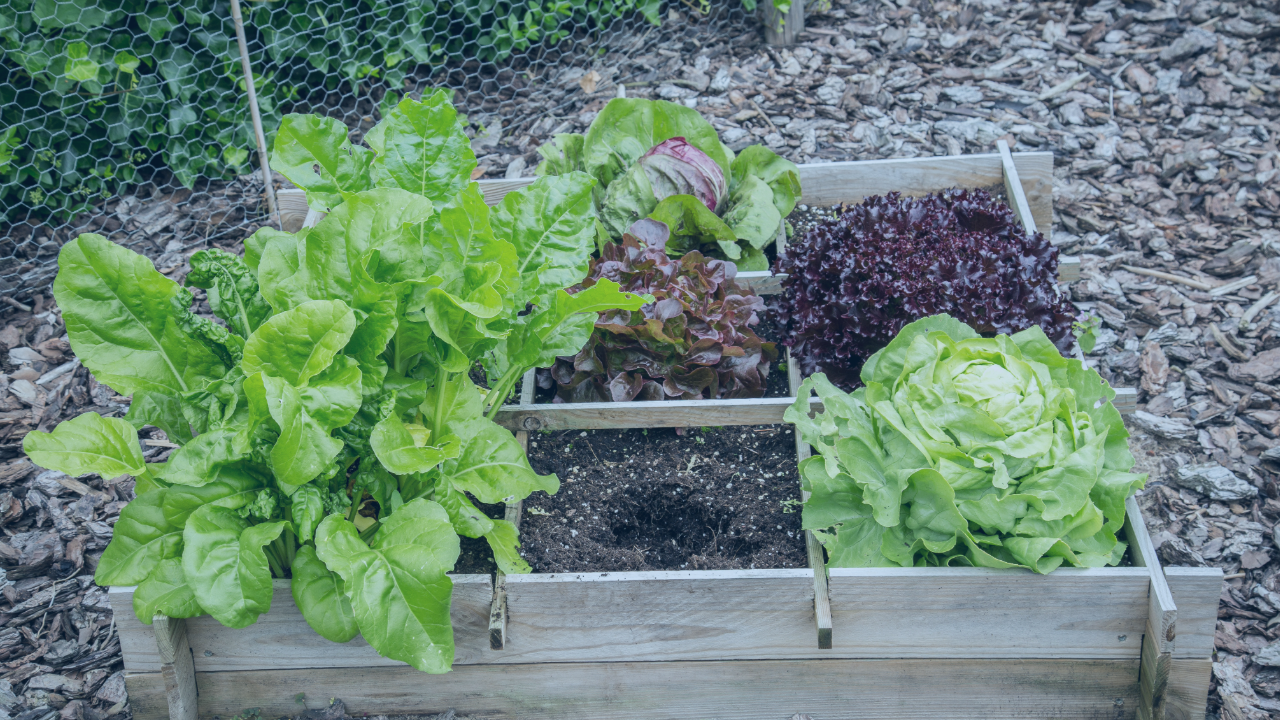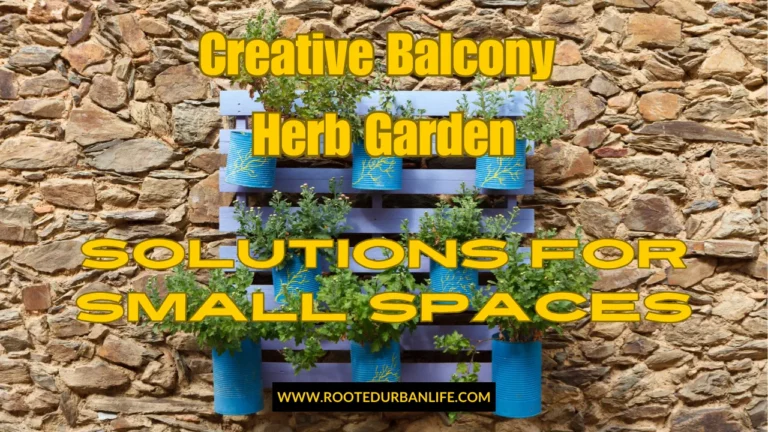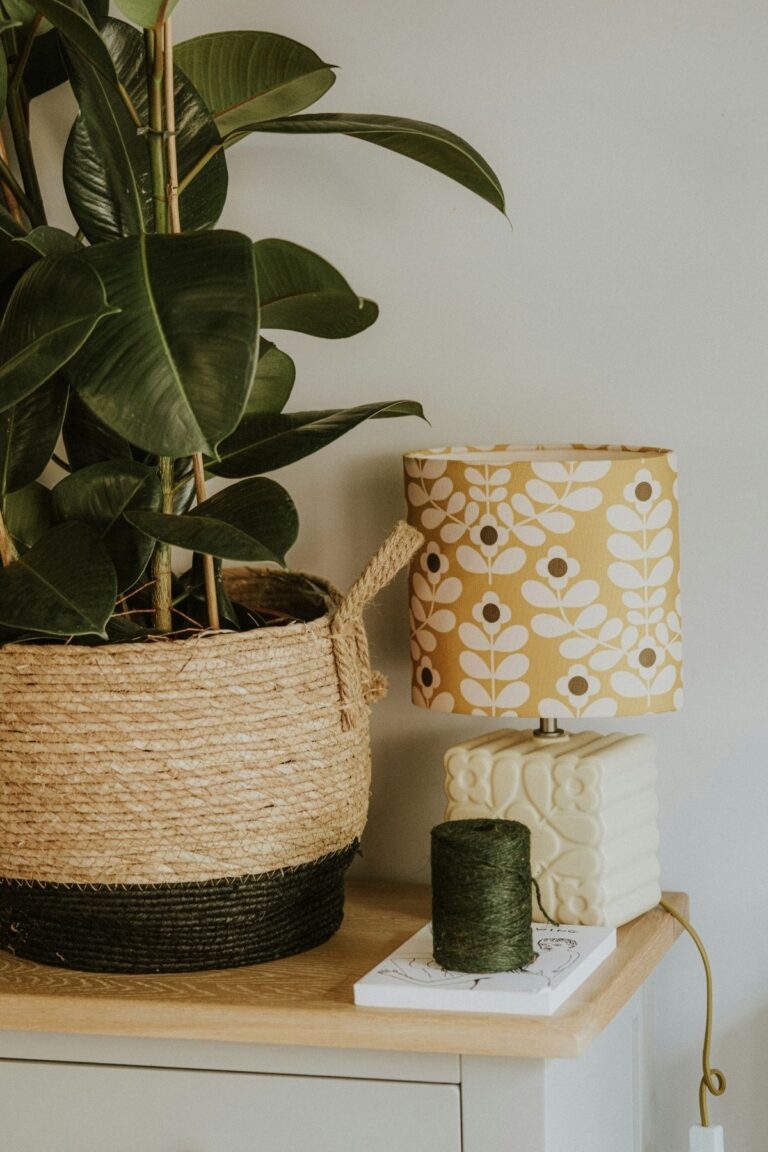12 Game-Changing Companion Planting Strategies for Small-Space Gardens
Transform Your Limited Garden Space into a Thriving Ecosystem Where Plants Help Each Other Flourish
Ever stared at your tiny garden space wondering how on earth you’ll grow all the vegetables you want? You’re not alone. That patch of dirt (or collection of containers) can feel impossibly small when you’re dreaming big. But what if I told you the secret isn’t about the space—it’s about who you invite to the party?
Companion planting—the strategic pairing of plants to benefit each other—is like introducing your plant friends to their perfect roommates. In this guide, you’ll discover 12 proven companion planting strategies that will revolutionize your small garden’s productivity, naturally repel pests, and maximize every square inch of your precious growing space.
What you’ll learn in this guide:
- 12 proven companion planting strategies that maximize every inch of small garden space
- Which plant combinations naturally repel pests without chemicals
- How to create self-supporting plant communities that need less maintenance
- Specific techniques for stacking and interplanting to double your harvests
- Simple planning systems that take the guesswork out of companion planting
Keep reading to learn exactly how to make your plants work together, so you can harvest more food with less effort. Your small garden is about to become the most efficient food-producing space on the block.
Essential Tools for Successful Companion Planting
| Disclosure: If you shop from my article or make a purchase through one of my links, I may receive commissions on some of the products I recommend at no additional cost to you. |
Before we dive into the strategies, let’s cover some helpful tools that will make your companion planting journey smoother:
- Garden Planning Journal – Track your successes and failures to refine your approach each season
- Plant Labels – Critical for remembering what’s planted where when using interplanting techniques
- Quality Garden Gloves – You’ll be doing more strategic planting, so protect those hands! [AFFILIATE]
- Multi-Seed Dibber – Creates perfectly spaced holes for interplanting seeds [AFFILIATE]
These aren’t all necessary to start, but the companion planting chart will save you hours of research and prevent costly mistakes.
1. Research Plant Compatibility Like a Scientist
I learned this the hard way after planting my fennel next to basically everything (turns out fennel isn’t exactly the “friendly neighbor” type). Successful companion planting begins with understanding which plants play nicely together and which ones need a restraining order.
Here’s how to become a plant matchmaker:
- Start with a reliable companion planting chart – Look for science-backed resources rather than folklore (though sometimes the old wisdom holds true!)
- Focus on your priority crops first – What vegetables do you absolutely want to grow? Build your compatibility research around these stars.
- Create a “friend or foe” list for each main crop – Note which plants enhance growth and which inhibit it.
- Join local gardening groups – Regional knowledge is gold since companion effects can vary by climate.
- Consult your county extension office – They often have specific companion planting guides tailored to your exact growing region.
Imagine walking into your garden knowing exactly which plants are secretly supporting each other. Your tomatoes growing lusher because of the basil nearby. Your carrots protected by the scent of onions that confuse carrot flies. It’s like having an invisible garden helper working 24/7.
Classic Companion Planting Partnerships
| Main Crop | Best Companions | Plants to Avoid | Benefits |
|---|---|---|---|
| Tomatoes | Basil, Marigolds, Nasturtiums | Potatoes, Corn, Fennel | Improves flavor, repels pests |
| Carrots | Onions, Leeks, Rosemary | Dill, Coriander | Masks scent from carrot flies |
| Cucumbers | Beans, Peas, Sunflowers | Potatoes, Aromatic Herbs | Provides shade, natural trellis |
| Lettuce | Carrots, Radishes, Strawberries | Broccoli, Cabbage | Uses different root depths |
| Beans | Corn, Squash, Carrots | Onions, Garlic, Gladiolus | Fixes nitrogen in soil |
| Brought to you by rootedurbanlife.com | |||
2. Plan Your Layout Like a Garden Chess Master
When I first tried companion planting, my garden looked like a random hodgepodge (spoiler: it performed like one too). Now I plan my garden layout with the strategic mind of a chess player—each plant positioned with purpose.
Here’s how to create a winning garden layout:
- Sketch your garden on paper first – Use colored pencils to code plant families or companions.
- Consider mature plant heights – Tall plants like corn or sunflowers should be positioned where they won’t shade sun-loving vegetables.
- Group plants with similar water needs – Creating irrigation zones saves water and prevents over/under-watering.
- Create access pathways – Ensure you can reach all plants without stepping on garden beds.
- Think in 3D – Use vertical space with trellises for climbers over low-growing plants.
- Plan succession planting – Note when short-season crops will finish so you can replace them with compatible companions.
Picture yourself moving through your garden with ease, seeing plants naturally supporting each other—tall corn providing afternoon shade for heat-sensitive lettuce, climbing beans using sunflower stalks as natural trellises. This isn’t just a garden; it’s a carefully orchestrated ecosystem.
3. Diversify Your Garden for Natural Balance
My first year gardening, I went all-in on tomatoes. Then came the hornworms… and they went all-in on me. Lesson learned: monocultures are an all-you-can-eat buffet for pests. Diversity is your garden’s insurance policy.
Try these diversity-boosting approaches:
- Include at least one flowering plant in each bed – Flowers like calendula and alyssum attract pollinators and beneficial insects.
- Mix herbs throughout your vegetable beds – Many herbs repel pests with their strong scents.
- Integrate edible flowers – Nasturtiums and borage double as pest deterrents and salad additions.
- Alternate rows of different crops – Rather than planting one large block of each vegetable.
- Add perennial plants to annual beds – They provide year-round habitat for beneficial insects.
Pro Tip: My Favorite Beneficial Flowers [AFFILIATE] I never garden without my “pollinator pack” of seeds—a mix of cosmos, zinnia, and sunflowers that bring in the good bugs while adding beauty to my veggie patch.
Imagine walking into your garden to find ladybugs patrolling your plants for aphids, bees busily pollinating your squash, and hoverflies hunting for pests—all because you created a habitat that welcomes these garden allies.
4. Deploy Natural Pest Control Partnerships
Forget toxic pesticides! I haven’t sprayed in two years thanks to strategic plant partnerships that naturally repel the bad bugs while attracting the good ones.
Here’s how to create a natural pest management system:
- Plant aromatic herbs near pest-prone vegetables – Basil near tomatoes deters tomato hornworms and mosquitoes.
- Install “trap crops” – Nasturtiums attract aphids away from your prized vegetables.
- Create “insectary plants” islands – Dill, fennel, and Queen Anne’s lace attract parasitic wasps that prey on caterpillars.
- Surround vulnerable crops with protective companions – Garlic and onions around carrots mask their scent from carrot flies.
- Incorporate strong-smelling marigolds throughout – Their roots release compounds that repel nematodes.
Imagine harvesting beautiful, unblemished vegetables without reaching for a single chemical spray. Your garden isn’t just organic—it’s self-regulating, with plant partnerships doing the pest control work for you.
5. Maximize Space with Strategic Interplanting
My tiny garden space doubled its productivity when I stopped thinking in rows and started thinking in layers. The secret? Plants have different growth rates, root depths, and space needs that can be cleverly combined.
Try these space-maximizing techniques:
- Pair fast-growing and slow-growing plants – Radishes mature quickly alongside slower carrots, harvested before the carrots need the space.
- Use the “Three Sisters” technique – Corn provides stakes for beans, which fix nitrogen for corn and squash, while squash leaves shade the soil.
- Plant shallow-rooted crops with deep-rooted ones – Lettuce won’t compete with tomatoes for root space.
- Utilize vertical space – Grow vining plants up trellises over root crops.
- Practice relay planting – As spring crops finish, replace them with companion-friendly summer varieties.
Picture your garden as an efficient apartment building instead of a single-story home—plants living harmoniously at different levels, sharing resources rather than competing for them.
6. Incorporate Nitrogen-Fixing Plants as Natural Fertilizers
Once I understood the magic of nitrogen-fixing plants, I practically slashed my fertilizer bill in half. Certain plants—mainly legumes—have the superpower of capturing nitrogen from the air and making it available in the soil.
Here’s how to harness this natural fertilizer:
- Plant beans or peas near heavy nitrogen-feeding plants – Corn, tomatoes, and leafy greens all benefit.
- Include clover as a living mulch – It adds nitrogen while suppressing weeds.
- Use fava beans as a cool-season companion – They fix nitrogen while producing an edible crop.
- Rotate legumes through different beds each season – This ensures all garden areas benefit from nitrogen enrichment.
- Chop and drop spent legume plants – Leave the roots in the soil to continue releasing nitrogen.
Imagine feeding your garden for free, with your plants creating their own fertilizer right where they need it. Your soil gets richer each season with barely any effort on your part.
Top Beneficial Insect Attractors
| Plant | Beneficial Insects Attracted | Pests Controlled | Additional Benefits |
|---|---|---|---|
| Sweet Alyssum | Hoverflies, Parasitic Wasps | Aphids, Cabbage Worms | Beautiful edging plant, sweet fragrance |
| Calendula | Ladybugs, Lacewings | Aphids, Whiteflies | Edible flowers, medicinal uses |
| Dill | Predatory Wasps, Hoverflies | Caterpillars, Aphids | Culinary herb, self-seeds readily |
| Borage | Honeybees, Bumblebees | Tomato Hornworm, Cabbage Worms | Edible flowers, cucumber-flavored leaves |
| Cosmos | Lacewings, Minute Pirate Bugs | Aphids, Thrips | Cut flowers, easy to grow from seed |
| Brought to you by rootedurbanlife.com | |||
7. Design Your Garden to Attract Crucial Pollinators
Before I focused on pollinators, my squash produced maybe three fruits. Now? I can’t keep up with the harvest. The difference? I invited the right guests to the garden party.
Here’s how to roll out the red carpet for pollinators:
- Plant flowers in clusters – Pollinators prefer concentrated nectar sources.
- Include flowers with different bloom times – Ensure continuous pollinator support throughout the season.
- Add borage near squash and cucumbers – Its blue flowers are irresistible to bees.
- Incorporate herb flowers – Let some herbs like basil, thyme, and oregano flower.
- Create morning-to-evening bloom schedules – Different pollinators are active at different times.
Tools That Make Pollinator Gardens Easier [AFFILIATE] My handheld pruner set is essential for deadheading spent blooms to encourage continuous flowering, keeping the pollinator buffet open all season.
Imagine watching bees, butterflies, and hoverflies moving efficiently through your garden, ensuring nearly 100% pollination of your fruiting crops—nature’s tiny farmhands working for free.
8. Practice Strategic Crop Rotation with Companions in Mind
Confession: My first attempt at crop rotation was just randomly moving plants around. Big mistake. Proper rotation isn’t just about moving—it’s about following compatible partners.
Here’s how to rotate with companion relationships in mind:
- Create a 4-year rotation plan – Group plants by family and rotate these groups.
- Keep compatible companions together during rotation – Some partnerships are worth maintaining across seasons.
- Follow heavy feeders with nitrogen fixers – Replenish soil nutrients naturally.
- Consider root depth in rotation – Follow deep-rooted plants with shallow-rooted ones.
- Maintain a detailed garden map each season – Know exactly what grew where.
Picture your garden as a dance floor where plants move in coordinated patterns, each taking turns leading while maintaining their favorite partners. The result is healthier soil and fewer pest problems year after year.
9. Observe and Adjust Based on Your Garden’s Feedback
My garden journal is worth its weight in gold—it’s where I track which companions thrived and which combinations flopped. Your specific soil, microclimate, and pest pressures will create unique results.
Here’s how to become a garden detective:
- Keep a simple garden journal – Note planting combinations, dates, and results.
- Take weekly photos – Visual records often reveal patterns you might miss.
- Note pest problems and their location – See if companion plantings are working as expected.
- Record harvest quantities – Compare yields from different companion groupings.
- Be willing to adjust mid-season – If something isn’t working, try adding supportive companions.
Imagine becoming so attuned to your garden that you can predict problems before they develop and make small adjustments that lead to significantly better harvests.
10. Start Small with Proven Companion Combinations
When I first discovered companion planting, I tried to reinvent my entire garden overnight. Spoiler alert: overwhelming! Start with these proven combinations that even beginners can master.
Try these beginner-friendly pairings:
- Tomatoes + Basil – Classic combination that improves tomato flavor while repelling flies and mosquitoes.
- Carrots + Onions – Onion scent masks carrots from carrot flies.
- Cabbage + Aromatic Herbs – Rosemary, sage, or thyme deter cabbage moths.
- Corn + Beans + Squash – The traditional “Three Sisters” planting.
- Roses + Garlic – Garlic prevents black spot on roses (yes, companion planting works for ornamentals too!).
Picture yourself harvesting a perfect tomato with a sprig of basil, knowing that these plants helped each other thrive with minimal intervention from you.
11. Adapt Companion Planting for Seasonal Changes
One season doesn’t fit all when it comes to companion planting. I’ve learned to adjust my plant partnerships as the weather shifts throughout the year.
Here’s how to create season-specific companion strategies:
- Use fast-growing spring companions – Pair lettuce with slower-growing spring crops.
- Plan summer shade companions – Let tall plants provide afternoon relief for heat-sensitive crops.
- Add protective fall companions – Some plants can shield others from early frosts.
- Consider seasonal pest cycles – Some companion effects are more important in certain seasons.
- Plant winter cover crop combinations – Even dormant seasons benefit from plant partnerships.
Imagine your garden adapting to each season like a well-rehearsed orchestra, with different plant combinations taking center stage as needed.
12. Implement Organic Pest Control Through Strategic Companions
Chemical-free gardening becomes much easier when you enlist plant allies in your pest management strategy. My slug problem disappeared when I circled vulnerable plants with these companions!
Here’s how to create a pest-resistant garden naturally:
- Add pest-repelling borders – Surround beds with aromatic herbs like rosemary or sage.
- Interplant strongly-scented companions – Garlic, onions, and chives confuse many pests.
- Use sacrificial trap crops – Nasturtiums attract aphids away from your main crops.
- Include predator-attracting plants – Dill and fennel attract beneficial wasps that prey on garden pests.
- Layer protective companions – Some plants protect at soil level, others at leaf level.
Picture walking through your garden seeing pests naturally controlled—nasturtiums drawing aphids away from your kale, marigolds protecting root vegetables, and beneficial insects patrolling for caterpillars—all because you planted the right partnerships.
What I Wish I Knew About Companion Planting
Here are my most valuable lessons:
Patience is key. Companion planting isn’t instant magic—it’s about building a garden ecosystem over time. My first season showed modest benefits, but by year three, the difference was dramatic.
Not all folklore holds up. Some traditional companion pairings (like beans and onions) didn’t work in my garden despite their popularity in gardening books. Trust your observations over general advice.
Keep it simple at first. I initially overwhelmed myself trying to create perfect plant communities. Start with 3-4 well-researched companions and expand from there.
Frequently Asked Questions
Q: How close should companion plants be to benefit each other? A: Most companion plants should be within 18 inches of each other to provide maximum benefit. Some effects are root-based while others are from airborne scents.
Q: Can companion planting completely eliminate the need for pest control? A: Not completely—but in my experience, it reduces pest problems by about 80%. I keep organic pest control on hand but rarely need it now.
Q: Do companion plants compete for nutrients? A: When properly paired, companions have different nutrient needs or root depths that minimize competition. Poor combinations, however, can compete aggressively.
Q: Can companion planting work in containers? A: Absolutely! I’ve had great success pairing herbs with vegetables in containers. Just ensure the pot is large enough (12+ inches diameter) for both plants to thrive.
Q: How do I know if my companion planting is working? A: Look for reduced pest damage, stronger plant growth, and increased yields compared to previous seasons. Keep notes to track improvement.
Key Takeaways
- Start with research but trust your observations – Local conditions greatly influence which companions work best in your specific garden.
- Think holistically about your garden as an ecosystem – The most successful companion planting creates a balanced community of plants that support each other.
- Keep records of what works – Your garden journal will become your most valuable companion planting resource over time.
- Diversity is your garden’s insurance policy – Mixed plantings are inherently more resilient than monocultures.
Next Steps
Ready to deepen your companion planting knowledge? These related articles will help you build on what you’ve learned:
Container Garden Companion Planting – Learn specialized techniques for companion planting in pots and small spaces.
Season-Extending Companion Strategies – Discover how the right plant partnerships can help you harvest earlier and later in the season.
Building Healthy Garden Soil Naturally – Explore how companion plants contribute to long-term soil improvement.
Final Recommended Resources
Essential Tools for Companion Planting Success
Take your companion planting to the next level with these game-changing resources:
- Complete Companion Planting Guide – My favorite comprehensive reference with companion charts for 70+ common garden plants [AFFILIATE]
- Premium Plant Markers – Weatherproof labels that help track your companion groupings [AFFILIATE]
- Garden Planning Software – Digitally plan and rotate your companion groups (much easier than my hand-drawn maps!) [AFFILIATE]
- Beneficial Insect Attractant Seed Mix – My go-to blend for attracting the good bugs to patrol your garden [AFFILIATE]
Companion planting isn’t just a gardening technique—it’s a return to the way plants naturally grow together in balanced ecosystems. By strategically pairing plants that support each other, your small garden space can produce more food with less work while becoming more resilient against pests and weather challenges.
Start with just one or two companion groups this season and watch what happens. I guarantee you’ll be amazed at how such a simple concept can transform your gardening experience!
Have you tried companion planting in your garden? I’d love to hear about your successes and challenges in the comments below. And don’t forget to sign up for my weekly gardening newsletter for more small-space gardening tips delivered right to your inbox.
Happy planting, and remember—in the garden, good companions make all the difference!







